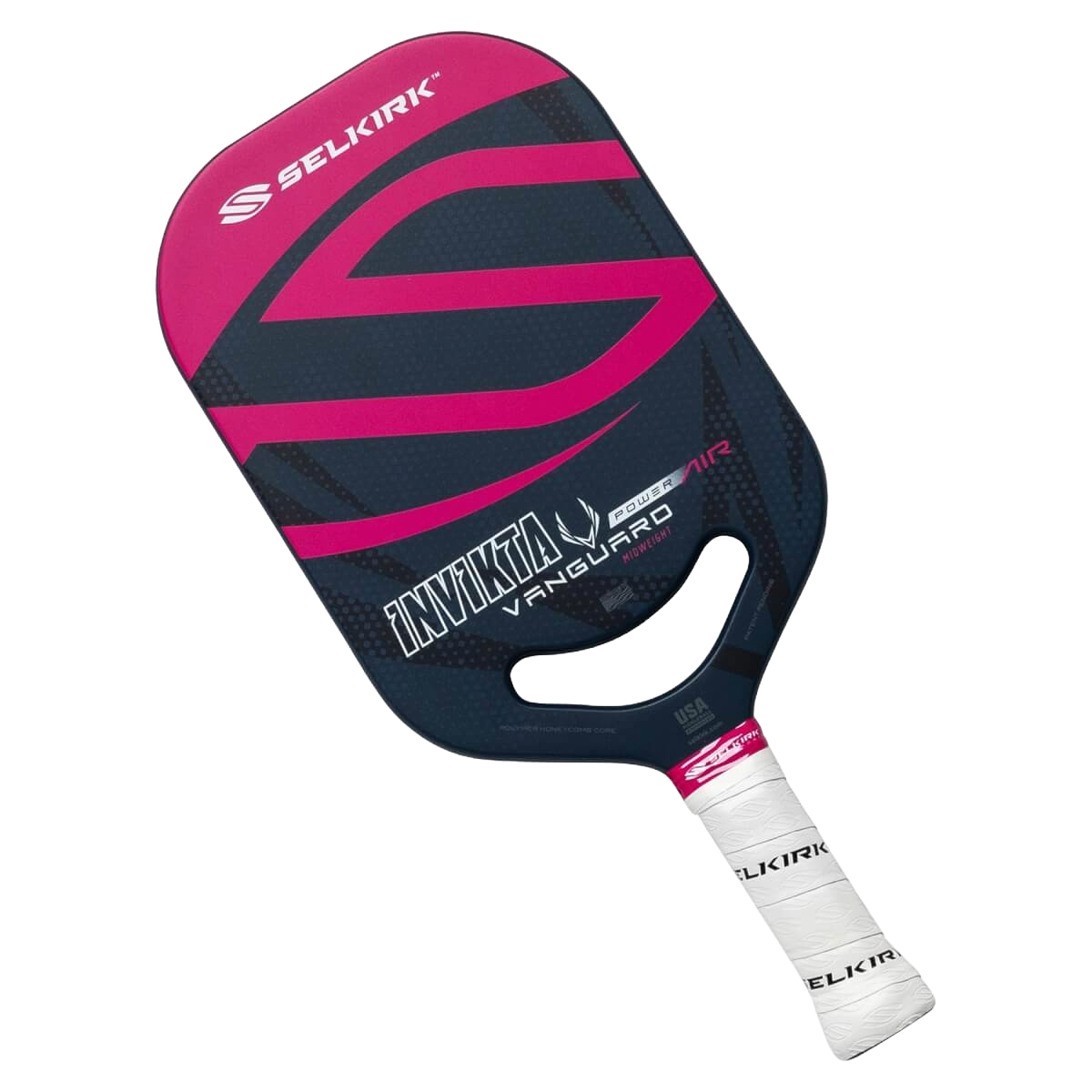Choosing the right pickleball paddle at the intermediate stage can unlock your next level of performance. The wrong paddle? It can stall your growth. Let’s make sure you pick one that becomes an extension of your instincts—not a limitation.
Follow this guide step-by-step (plus a few insider hacks!) and you’ll move faster, hit sharper, and feel more confident on every shot.
1. Start Here: What Do You Need More Right Now? 👉 Use this flowchart to decide:
| Question | If Yes | If No |
|---|---|---|
| Do you need more control and finesse? | Choose a lighter (7.3–7.7 oz) paddle. | Go heavier (7.8–8.4 oz) for power. |
| Do you often volley at the net? | Standard or Hybrid shape for easier reaction. | Elongated shape for extended reach. |
| Do you want to generate extra spin? | Look for a textured composite or carbon fiber face (learn how to get more spin). | Graphite face for precision placement. |
| Are you experiencing elbow pain? | Prioritize polymer core for vibration absorption (best paddles for tendonitis). | Nomex core for aggressive “pop”. |
✅ Pro Tip: Midweight paddles (~7.8 oz) offer the best long-term growth if you’re unsure. They balance power and control beautifully.
2. Core Materials: What’s Inside Your Paddle Matters
🔹 Polymer Core (Best All-Around Choice)
- Soft feel
- Damps vibration
- Excellent for consistency and control
🔹 Nomex Core (Aggressive Play)
- Loud, crisp “pop”
- Generates power
- Less forgiving on mishits
🔹 Aluminum Core (Rare but Versatile)
- Lightweight
- Balanced touch and durability
✅ Pro Tip: Polymer cores dominate the pro circuit for a reason—they minimize fatigue while maximizing control under pressure (understand paddle core differences).
3. Face Materials: Touch, Spin, and Feel
| Material | Best For | Key Traits |
|---|---|---|
| Graphite | Precision placement | Lightweight, soft feel |
| Composite | Spin & aggressive drives | Textured surface for enhanced grip |
| Carbon Fiber | Maximum finesse | Ultra-durable, premium vibration dampening |
✅ Hack: If you want both control and spin, pick a paddle labeled “Carbon Fiber + Textured Surface”—some brands combine technologies now (see why carbon fiber matters).
4. Paddle Shapes: Choose Your Weapon
| Shape | Best For | Pros |
|---|---|---|
| Standard (Widebody) | Doubles, net play | Huge sweet spot, forgiveness |
| Elongated | Singles, aggressive baseliners | Extra reach and power |
| Hybrid | All-around versatility | Blend of reach and control |
✅ Pro Tip: If you play both singles and doubles, a Hybrid shape is your best investment for versatility (understand paddle shapes).
5. Match Your Paddle to Your Play Style
| Play Style | Ideal Paddle | Suggested Models |
|---|---|---|
| All-Around Balance | Midweight, Polymer Core, Graphite Face | ✔ Selkirk SLK Evo Hybrid, ✔ Engage Encore EX 6.0 |
| Aggressive Power Hitter | Heavyweight, Nomex Core, Composite Face | ✔ Paddletek Tempest Wave Pro, ✔ Gearbox GX6 |
| Spin Specialist | Midweight, Textured Composite Face | ✔ Selkirk Vanguard Power Air, ✔ Joola Hyperion CFS 16 |
| Fast Hands Specialist | Lightweight, Graphite Face | ✔ CRBN 1X Power Series, ✔ ProKennex Kinetic Pro Speed |
| Net Dominator | Standard Shape, Soft Polymer Core | ✔ Onix Evoke Premier, ✔ Franklin Signature Pro |
| Singles Specialist | Elongated Shape, Heavyweight | ✔ Selkirk Amped Invikta, ✔ Engage Pursuit MX |
Want to learn even more about pickleball tips for intermediate players? Boost your game off the court, too.
6. Emerging Paddle Trends for 2025+
- Hyper-Textured Surfaces: Some brands are experimenting with 3D surface tech to enhance spin even more without sacrificing durability.
- Dynamic Core Hybrids: Look for new “layered cores” that switch from soft to hard depending on swing speed.
- Weight-Tuning Systems: Future paddles may allow real-time weight adjustments using micro inserts.
✅ Pro Tip: Buying a paddle that already features carbon fiber and polymer cores future-proofs your gear for at least 2–3 seasons (learn how to choose a paddle).
7. Final Key Takeaways
- Weight: 7.8–8.1 oz Midweight is usually perfect for intermediate players (is lighter or heavier better?).
- Core: Polymer is safest for control and longevity.
- Face: Choose Composite (spin) or Carbon Fiber (control finesse).
- Shape: Standard or Hybrid for maximum versatility.
Grip Size: Get a size that matches your hand for better feel and injury prevention (how to hold a pickleball paddle).
Final Hack: Test Before You Buy!
If possible, demo a few paddles in your target specs. Feel the difference in your swing speed, control, and confidence. Trust your instincts!
P.S.
Picking the right paddle isn’t just about specs—it’s about how you feel when you’re mid-rally, stealing points like a court ninja. 🥷 Trust your instincts, demo when you can, and remember: the right paddle isn’t found… it’s forged through play. Want even more insider gear tips and secrets? Come check out the full arsenal right here.

